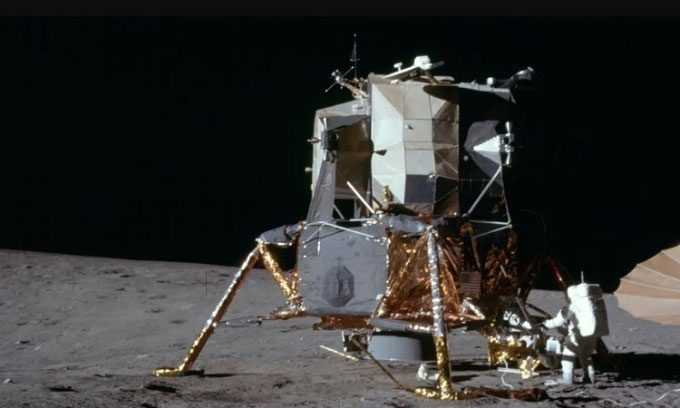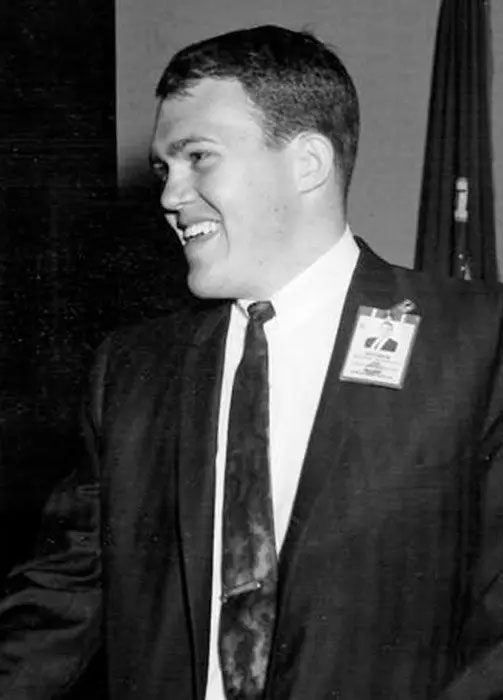An American engineer named Jack Garman played a crucial role in the successful landing of Apollo 11 on the Moon by identifying an alarm error in the control computer.

The Eagle landing module safely brought Neil Armstrong and Buzz Aldrin to the Moon on July 20, 1969. (Photo: NASA)
In 1969, John “Jack” Garman was working at NASA’s Mission Control Center at the Johnson Space Center in Houston, Texas. As a computer engineer, he ensured that the spacecraft’s operating computer functioned as intended. This computer was called the Apollo Guidance Computer (AGC). It was used by astronauts to pilot and control the spacecraft, utilizing a basic digital display and a DSKY keyboard. Engineers would input control commands into the machine, and the spacecraft would respond accordingly.
However, during the landing attempt on July 20, 1969, when Neil Armstrong and Buzz Aldrin were on the lunar landing module, an issue arose. The AGC entered a fault mode known as alarm 1202 as they descended toward the surface. For several seconds, no one understood what was happening, putting the mission in jeopardy. “It was strange to have a system, a vehicle operated by a computer. I mean, today, cars also run on computers, but back then, almost all systems used analog technology,” Garman recalled.
The AGC was designed to display alarms when the computer was overloaded. Alarm 1202 was one such alert. It indicated that the mission’s guidance computer was struggling with the amount of incoming data due to a wrongly positioned switch. However, as the astronauts reported this alarm repeatedly during their descent, tension mounted because no one was certain what it meant.
But there was one person who understood the cause of the alarm. Following the advice of Gene Kranz, one of the flight directors for the mission, Jack Garman examined all the different error codes. Previously, during a simulated landing, alarm 1202 had resulted in a mission abort. Kranz was furious and instructed Garman to investigate every possible alarm program. Garman meticulously checked each alarm code and compiled a list of findings.

Jack Garman.
When Aldrin mentioned the 1202 issue during the landing, Mission Control took several seconds to comprehend the alarm. They then needed about 10 seconds to respond, meaning the crew had to wait approximately 20 seconds for a resolution. Every second was critical during the landing. “We knew that was one of the reasons Armstrong forgot to check where he was because he wasn’t looking out the window. They weren’t sure where they landed for a while after touchdown, possibly largely due to being distracted by the alarm program,” Garman shared.
After Aldrin’s call, Garman’s supervisor, Steve Bales, quickly called the entire team to investigate what was going on. With the compiled list in hand, Garman immediately confirmed that there was nothing to worry about. This allowed Bales to radio the crew to inform them that everything could proceed. It was a decision of whether to proceed or not. They transmitted the order to each team via radio, with just one word, “Go,” meaning the landing operation could continue.
This event was so significant that Bales later received the Presidential Medal of Freedom for representing the entire team in making the decision. However, Garman became widely known for his quick response. He passed away on September 20, 2016, at the age of 72. “I was very saddened to hear that Jack Garman had passed away,” Wayne Hale, former flight director and space shuttle program manager, remarked at the time. “He saved the first Moon landing mission.”


















































